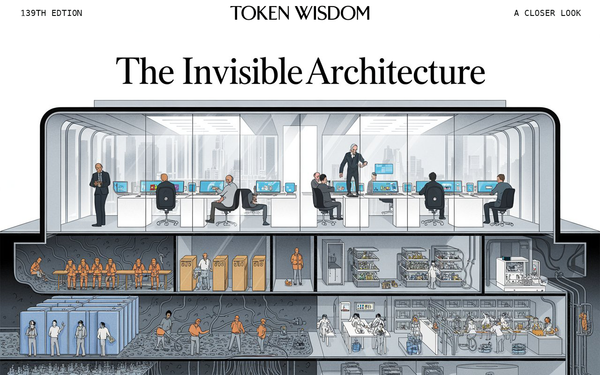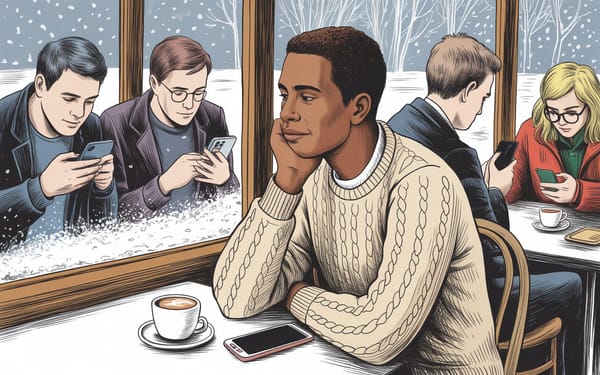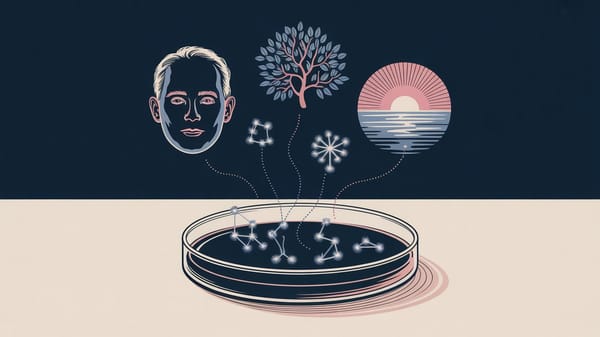"The greatest trick the devil ever pulled was convincing the world he didn't exist."

From Military Secrecy to Consumer Ubiquity: The Silent Rise of UWB
In the shadows of the Cold War, a technology was born that would one day reshape the very fabric of our society. Ultra-wideband (UWB) technology, emerging from classified military research in the 1960s, was designed with a singular purpose: to enable covert communications and precision tracking that could evade detection. The U.S. Department of Defense pursued this technology for a compelling reason: unlike conventional narrow-band transmissions, UWB's spread-spectrum signals were virtually impossible to detect or jam. By dispersing information across an unprecedented range of frequencies simultaneously, UWB achieved a feat that bordered on the miraculous – it vanished into the ambient electromagnetic noise of our world, hiding in plain sight.
Half a century later, in the winter of 2019, this military technology quietly entered millions of homes worldwide. Apple, having strategically acquired Intel's smartphone modem business for $1 billion, unveiled the U1 chip in their iPhone 11 series. This minuscule component, barely larger than a grain of rice, signified more than just the commercialization of military technology; it heralded the deployment of potentially the most sophisticated surveillance infrastructure ever conceived.
The technical specifications reveal its true capabilities. Operating at frequencies between 3.1 and 10.6 GHz, the U1 emits incredibly brief pulses – lasting less than a nanosecond – across a minimum bandwidth of 500 MHz. These figures are far from arbitrary. This configuration enables time-of-flight calculations with picosecond accuracy, allowing for position tracking precise to within 10 centimeters in three-dimensional space. To put this in perspective, GPS, under optimal conditions, is accurate only to within 5-10 meters. In essence, the U1 chip boasts a precision fifty times greater than the technology we rely on to guide intercontinental missiles.
Apple's patent portfolio tells an even more striking story. Patent US20190086219A1, blandly titled "Electronic Device With Co-Processor For Indoor Navigation," describes a system capable of not just tracking location, but creating detailed point clouds of environments, tracking multiple objects and people simultaneously, and building persistent spatial awareness models. The patent's clinical language masks its true implications: every UWB-enabled device becomes a node in a vast mesh network, collectively maintaining a real-time digital duplicate of physical reality.
The Top Articles of the Week
100% Humanly Curated Collection of Curious Content
The evolution from military to consumer technology followed a familiar pattern. In 2002, the Federal Communications Commission authorized the commercial use of UWB under strict power limitations. The technology found initial applications in ground-penetrating radar and precision industrial measurements. But it was the automotive industry, seeking high-precision collision avoidance systems, that drove early commercial development. By 2015, UWB chips had become small enough and cheap enough for mobile devices.
The COVID-19 pandemic provided the perfect catalyst for accelerating surveillance infrastructure deployment. In April 2020, Apple and Google announced their joint exposure notification system, which would eventually be implemented by 60 countries for contact tracing. While this initial system used Bluetooth rather than UWB, it established both the technical infrastructure and public acceptance for mass movement tracking. Singapore's TraceTogether program reached 92% of their population. Australia's COVIDSafe app was downloaded by over 7 million citizens. Qatar made their Ehteraz app mandatory for all citizens and residents, with fines of up to $55,000 for non-compliance.
The real-world implications of UWB tracking emerged in stark detail through academic research. In August 2021, researchers at the Technical University of Munich demonstrated how UWB systems could track individuals through walls with centimeter-level accuracy. Their paper, published in IEEE Access, showed how the technology could identify and classify human activities, analyze movement patterns, and even detect subtle changes in behavior – all without any active participation from the subject.
The commercial exploitation of this capability was swift and comprehensive. The Norwegian Consumer Council's 2020 report "Out of Control" revealed how popular apps share location data with up to 40 different third parties. The data broker industry, valued at $200 billion according to the International Association of Privacy Professionals, has transformed human movement patterns into a commodity.
The New York Times' 2019 investigation "One Nation, Tracked" exposed the scale of this surveillance economy. Analyzing just one dataset containing over 50 billion location pings from 12 million Americans, they found phones reporting their location an average of 14,000 times per day. The precision was sufficient to track individuals to specific rooms within buildings. More disturbing was the revelation that much of this data came from seemingly innocuous apps – weather forecasts, local news, and games.
Legal frameworks have proven inadequate to address these capabilities. The Electronic Communications Privacy Act, written in 1986, considers location data "non-content" information, affording it less protection than the content of communications. The Supreme Court's landmark decision in Carpenter v. United States (2018) required law enforcement to obtain a warrant for cell phone location data, but this ruling doesn't address private sector collection.
The European Union's General Data Protection Regulation (GDPR) provides stronger protections, requiring explicit consent for location tracking. However, its implementation reveals critical weaknesses. Article 25's requirement for "privacy by design" becomes almost meaningless when dealing with technology that can track individuals without their active participation. How do you consent to being tracked by other people's devices?
The Massachusetts Institute of Technology's research on location privacy demonstrates why individual opt-outs are insufficient. Their 2013 study showed that human mobility traces are highly unique – just four spatio-temporal points are enough to identify 95% of individuals in a dataset. With UWB's centimeter-level precision, this becomes even more acute. Your movement pattern is as unique as your fingerprint, and far easier to collect.
The behavioral impact of ubiquitous surveillance has been well documented. PEN America's 2013 study found that 1 in 6 writers had avoided speaking or writing on certain topics due to surveillance concerns. A 2019 study published in Journalism & Mass Communication Quarterly demonstrated how awareness of surveillance leads to increased self-censorship and conformity. The "chilling effect" isn't just theoretical – it's measurable and profound.
The technical capabilities of UWB extend far beyond simple positioning. The U1 chip's ability to measure angle of arrival (AoA) and angle of departure (AoD) enables precise orientation tracking. Combined with its time-of-flight measurements, this creates what Apple's patents describe as "micro-location awareness" – a three-dimensional understanding of space and movement that approaches omniscience.
Current deployments of this technology are expanding rapidly. The Car Connectivity Consortium, which includes Apple, BMW, and Volkswagen, has standardized UWB for digital car keys. The FiRa Consortium, led by Samsung and NXP Semiconductors, is developing UWB standards for smart homes and cities. The U.S. National Institute of Standards and Technology is incorporating UWB into their public safety communications standards.
The implications for privacy are profound. Traditional countermeasures like GPS spoofing or radio frequency blocking become ineffective against UWB's spread-spectrum signals. The technology's low power requirements mean it can operate continuously without significant battery drain. Its ability to penetrate walls and clothing makes physical barriers irrelevant. Most critically, its mesh networking capability means that opting out becomes impossible – you're tracked by the network of devices around you, not just your own.
A Wise Investment of Your Time
List of YouTube videos that captured my undivided attention.
Technical solutions currently under development offer limited hope. Zero-knowledge proofs could enable location verification without revealing exact positions. Homomorphic encryption might allow spatial data to be processed without being decrypted. But these address only the symptoms of a deeper transformation – the creation of an architecture of perfect surveillance, built not through government decree but through the steady advance of consumer technology.
Apple's dominance in UWB chip production, confirmed by market analysis from Strategy Analytics, means they've become the de facto architects of this surveillance infrastructure. Their implementation, detailed across dozens of patents, shows a system designed to create persistent spatial awareness at a scale previously unimaginable. Every iPhone becomes both observer and observed, contributing to a constantly updating model of physical reality.
The mathematics of UWB tracking are unforgiving. Operating at frequencies between 3.1 and 10.6 GHz means these signals pass through most building materials. The short pulse duration – less than a nanosecond – allows for precision that would have seemed impossible just years ago. Each iPhone's U1 chip creates roughly 1 billion pulses per second, generating a continuous stream of spatial data that makes traditional surveillance methods obsolete.
We stand at a crucial juncture. The infrastructure of perfect surveillance is being completed around us, not through any malicious intent but through the relentless logic of technological convenience and commercial imperative. Each small erosion of privacy is marketed as an enhancement to user experience, each new tracking capability presented as a feature rather than a violation.
The window for understanding and addressing these implications is closing rapidly. As UWB technology becomes embedded in more devices and infrastructure, the ability to opt out disappears. The perfect surveillance state isn't being built through force – it's being built through convenience, one chip at a time.
This tiny U1 chip represents more than just another technological advancement. It represents the final piece in a system of unprecedented surveillance capability, deployed globally through devices we voluntarily carry and pay for. The question isn't whether this system exists – it's already here.
The question is whether we will recognize it for what it is before the architecture of invisibility becomes permanent.









Member discussion